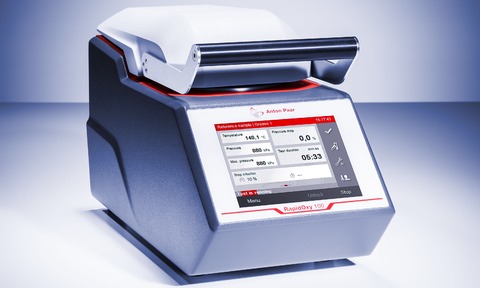
The first standard method for Anton Paar RapidOxy 100 has been introduced, especially for analysing the oxidation stability and decay of lubricating grease.
Oxidation stability and ultimately the shelf life is an important criterion for many products. The RapidOxy 100 enables this to be precisely determined by measuring how much oxygen can be absorbed and chemically bound by a product - a measurement standard that has been in use across a wide spectrum of industries for more than ten years.
Following requests from the grease and lubricant industry, The American Society for Testing and Materials (ASTM) has published an official standard method with the RapidOxy 100 under the title "ASTM D8206: Standard test method for oxidation stability of lubricating greases – Rapid Small Scale Oxidation Test (RSSOT).” Preparation of the new method involved extensive inter-laboratory trials involving RSSOT users from across the USA and Europe.
The test procedure is quite simple. Four grams of a sample are puts into the RapidOxy 100, which is then loaded with pure oxygen under a pressure of 700 kPa. When heated up to a maximum of 180 degrees, the pressure drop in the measuring chamber is observed. The pressure drops because oxygen reacts with the sample and is this way consumed. Thus, the pressure drop is a measure for the oxidation and the ‘decay’ of the sample.
The recently-published ASTM standard method deals with the spoilage of lubricating grease. "Oxidation of the grease leads to a loss of lubricity; the grease becomes harder and can clump, for example. Furthermore, oxidation products can form that corrode or damage the machinery instead of lubricating it," explained Gerold Tandler, head of product lines at Anton Paar ProveTec.






